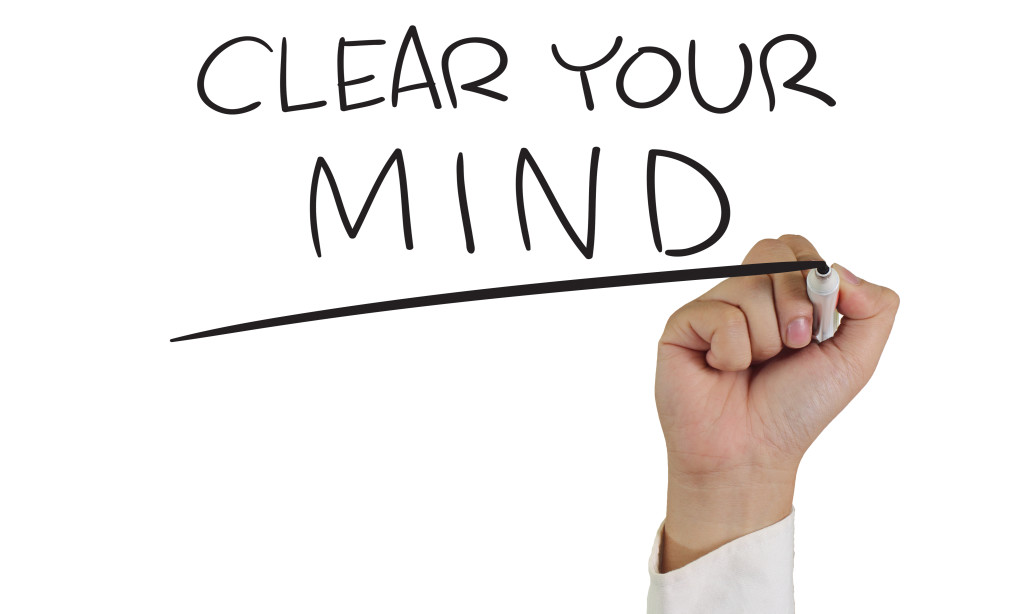Your body and brain were designed to handle short bursts of stress to help you get away from lions and tigers and bears. Once you are safe your stress response is supposed to go back down to its 0 baseline. When you are chronically stressed and especially when your stress response never gets back to baseline many things start to malfunction in your body and your mind. These techniques help you turn off your stress response and with practice to get it back to a 0 baseline quickly. Allowing your body to get a rest from constant stress hormones can have enormous benefits for your emotional functioning and even your physical health.
How It Works
In general, the more you try to stop thinking about something, the more you will think about it, its like putting a spotlight on a something and then trying to not look there. So the best way to stop thinking about something is to think about something else. But the key is that the something else you think about has to be complicated enough that it is going to take all of your attention, so that there are any neurons left for the upsetting thoughts to inhabit.
The other key is that once you get yourself worked up and stressed over something, your brain puts on a three-ringed circus of upset, you have negative thoughts, worst-case scenario images and your body gets agitated. To make any real progress you have to cool off all three rings of the circus.
While most stress reduction programs help you to calm only one part of your brain, these techniques help you to quiet your whole brain. A simple way to think about it is this, you can divide your brain into 3 parts – left hemisphere, right hemisphere and brain stem. Your left brain specializes in language and math, your right brain specializes in images and music and your brain stem controls life support systems like breathing, blood pressure and heart rate. When you get upset your left brain uses language to start the worry circuit, your right brain uses images to create vivid worst case scenarios and your brain stem increases your heart rate, blood pressure and breathing. Since any one part of your brain can only fully concentrate on one thing at a time, this technique uses left hemisphere tasks to break your worry circuit, right hemisphere tasks to turn off your worst case scenarios and breathing tasks to quiet your brain stem. Step 1 – Baseline Negative Feeling
Rate the strength of your negative feelings (mad, sad, scared, tense, etc) by choosing a number from ‘0’ to ‘10’. A ‘0’ means neutral (no negative feeling) and a ‘10’ means the most negative that you have ever felt. Pinpoint accuracy is not required, so please don’t over-think it.
Step 2 – Blank Screen
Close your eyes, clear your mind and imagine a big blank screen. Concentrate on the color and the texture of the screen.
Wait until the negative feeling reduces as much as it is going to (when it bottoms out) and rate your negative feeling on the 0-10 scale. If it reaches a “0” or a “1” then stop and enjoy your clear mind. If not then continue.
Step 3 – Counting Backwards
Count backwards in your head from 100 by “1”s (100,99,etc) “2”s, “3”s , “7”s or “11”s – whichever is challenging but not stressful.
Wait until the negative feeling reduces as much as it is going to (when it bottoms out) and rate your negative feeling on the 0-10 scale. If it reaches a “0” or a “1” then stop and enjoy your clear mind. If its a 2 or above, then continue.
Step 4 – Imaginary Band
Clear your mind and imagine a band or orchestra playing an instrumental piece. Try to hear and visualize as many instruments as you can.
Wait until the negative feeling reduces as much as it is going to (when it bottoms out) and rate your negative feeling on the 0-10 scale. If it reaches a “0” or a “1” then stop and enjoy your clear mind. If its a 2 or above, then continue.
Step 5 – Balloon Breathing
Think of your lungs like a balloon that you are going to put some air in, then wait, then put more air in without letting any air out. You keep putting in bursts of air without letting any out until it is about to pop. Perform the following steps:
- Try to squeeze all of the air out of your lungs.
- Then take in a normal breath in and hold your breath, don’t breath out.
- When you need more air breath in again and hold your breath again.
- Continue breathing in whenever you need more air but without breathing out.
- Do this as many times as you can. Push it until you feel like your lungs are going to pop.
- When you can’t get another gulp of air in your lungs then slowly breathe out and start another breath-in-but-don’t-breath-out cycle.
Wait until the negative feeling reduces as much as it is going to (when it bottoms out) and rate your negative feeling on the 0-10 scale. If it reaches a “0” or a “1” then stop and enjoy your clear mind. If its a 2 or above, then start the sequence again.
FURTHER READING
Baddeley’s model of working memory (Wikipedia Article)

Leave a Comment